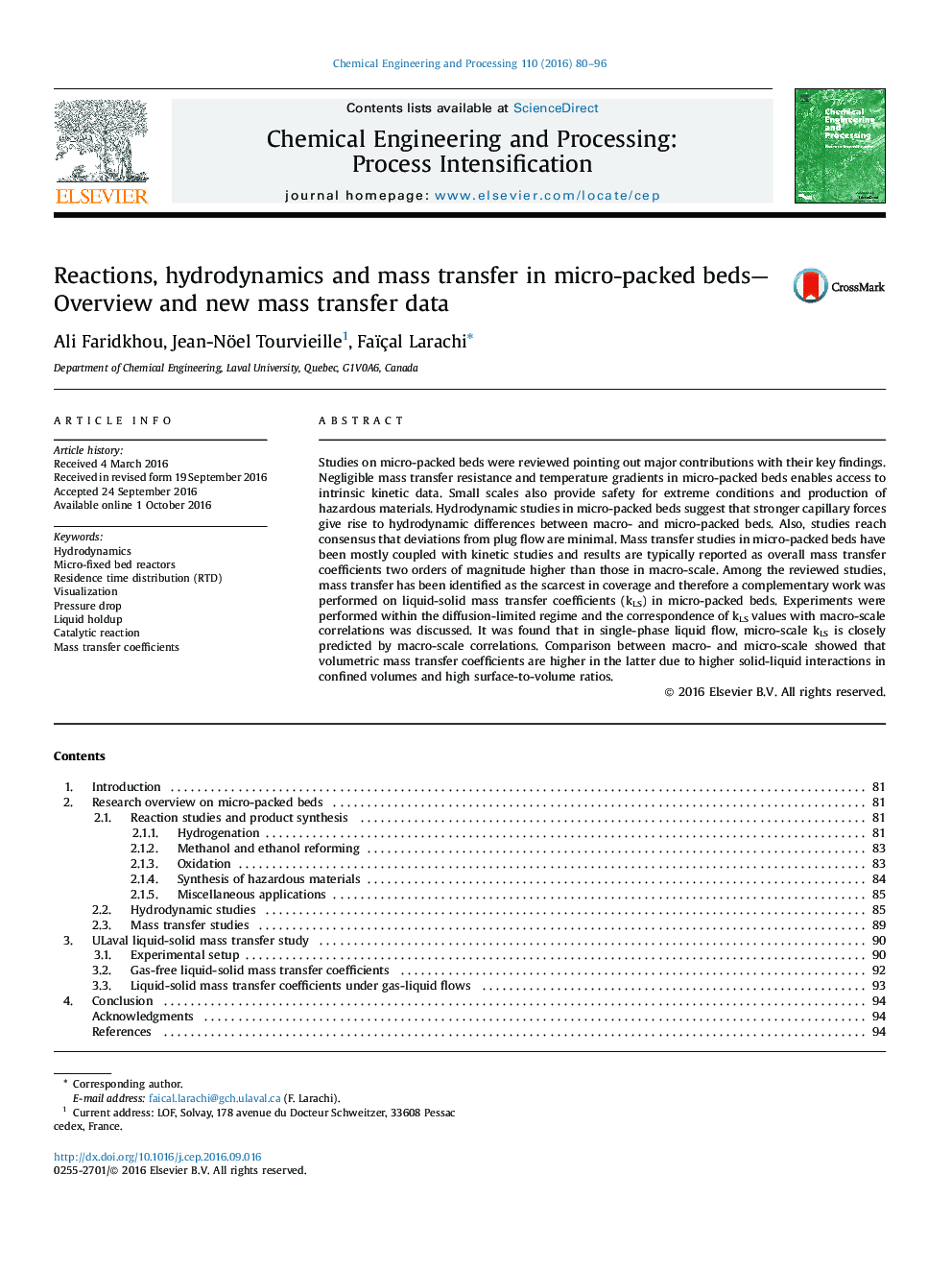| Article ID | Journal | Published Year | Pages | File Type |
|---|---|---|---|---|
| 4998316 | Chemical Engineering and Processing: Process Intensification | 2016 | 17 Pages |
Abstract
Studies on micro-packed beds were reviewed pointing out major contributions with their key findings. Negligible mass transfer resistance and temperature gradients in micro-packed beds enables access to intrinsic kinetic data. Small scales also provide safety for extreme conditions and production of hazardous materials. Hydrodynamic studies in micro-packed beds suggest that stronger capillary forces give rise to hydrodynamic differences between macro- and micro-packed beds. Also, studies reach consensus that deviations from plug flow are minimal. Mass transfer studies in micro-packed beds have been mostly coupled with kinetic studies and results are typically reported as overall mass transfer coefficients two orders of magnitude higher than those in macro-scale. Among the reviewed studies, mass transfer has been identified as the scarcest in coverage and therefore a complementary work was performed on liquid-solid mass transfer coefficients (kLS) in micro-packed beds. Experiments were performed within the diffusion-limited regime and the correspondence of kLS values with macro-scale correlations was discussed. It was found that in single-phase liquid flow, micro-scale kLS is closely predicted by macro-scale correlations. Comparison between macro- and micro-scale showed that volumetric mass transfer coefficients are higher in the latter due to higher solid-liquid interactions in confined volumes and high surface-to-volume ratios.
Keywords
Related Topics
Physical Sciences and Engineering
Chemical Engineering
Process Chemistry and Technology
Authors
Ali Faridkhou, Jean-Nöel Tourvieille, Faïçal Larachi,
